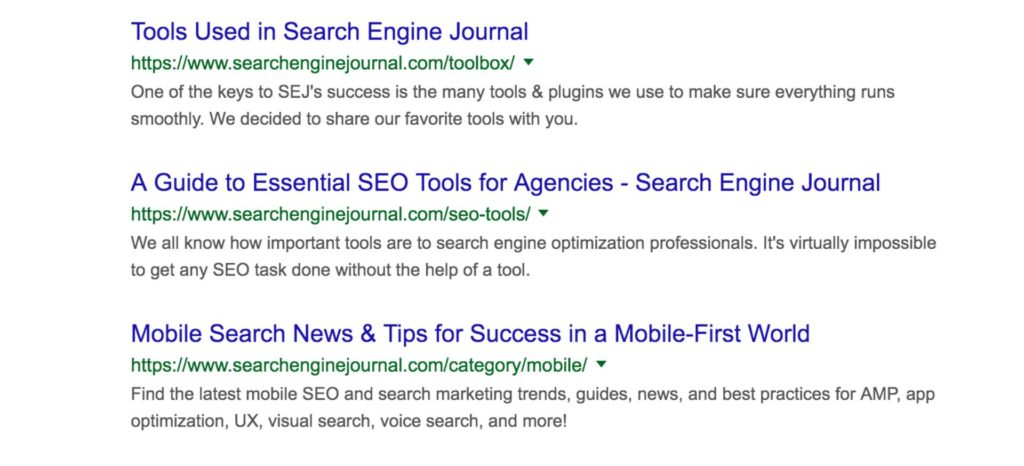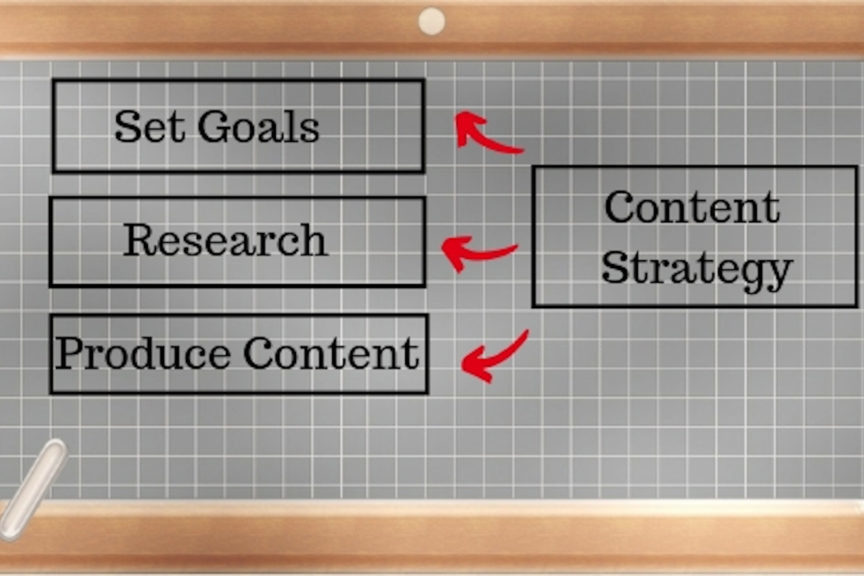Blog Guidelines for SMBs
Warning to SMBs: beware of the numerous SEO hacks. Many digital agencies will spend a huge chunk of your budget creating a technically-sound website, and a small percent on optimizing existing content or blogging.
Having the technical issues addressed is absolutely crucial for success. But unfortunately, for many businesses, the blog talk is typically last. I believe businesses should immediately start a blog, and have witnessed the long-term ROI when blogging is done correctly and consistently.
Yes – blogs naturally strengthen SEO, but there’s much more to a blog than simply achieving higher rankings. A blog is a must to establish what I call “TAR” within your industry: Trust, Authority and Reputation. A blog will fuel the educational needs of prospects, but it’ll also create an ongoing conversation with your current clients, helping them become more loyal to your brand. And with loyalty arrives increased referrals and revenue.
A blog strategy must follow some guidelines that put the originality of the piece first vs SEO. I’ve worked with agencies that created blogs with SEO in mind first, originality second. This is wrong; to truly achieve the upper powers of what I call “home-base” content marketing, you must create a blog with original content first, SEO second.

Why? Because the world of online writing is filled with noise, and much of that noise is designed to attract someone to a landing page for a sale. Many forget about the value of educating their audience and proving they truly are passionate about what their business represents.
This is why all blog strategies should begin with the personality behind the business, highlighted by core values. These are typically carried down from the leader or founder of a company. To truly engage with readers, you must care about them and invite them into your world. Write honestly, and be human; there’s no such thing as perfection in the real world.
Writing with SEO in mind is as crucial as originality, but shouldn’t be the primary focus. This thinking has guided my blog-creation strategies for blogging clients. I care first about developing and strengthening their voices within their industry, but make sure all is search friendly.
I make sure to find expert writers who are proficient and passionate about the client’s industry, and provide SEO guidelines so the writers can have a smooth journey from the first word to completion. These guidelines take on the form of Gandolf to Frodo, guiding the SEO enhancements as writers continue on their creative journey.
The process takes much energy, but it’s well worth the outcome of establishing TAR, which naturally leads to stronger SEO and ROI.
Following are some tactics for those SMBs who want to effectively blog – and remember up front, blogs should never be outright promotional. Save that for service pages.
Creating Original Blog Content
Capture Attention & Establish Immediate Rapport
The title of the article, as SEOs call a title tag, is the first thing to grab attention. These must be created with SEO in mind as mentioned in the section below, but it must also capture attention. Some spend as much time writing headlines as they do the content itself.
And it truly is that important; a simple rearrangement of words can sometimes produce vast differences in opening rates. That’s one reason we believe in A/B testing titles – sometimes three-to-five over a set amount of time.
Capturing attention doesn’t end with titles; the opening paragraph is just as important for keeping an audience engaged and reading the rest of your blog post. You’ll also want to establish immediate rapport in the first few paragraphs. Again, be human. The writing should be natural and not forced, and speak to humans with lack of jargon
Answer Questions
When you know your target audience, you know their questions. And a blog’s top priority is to answer those questions. It sounds simple, but many forget this and immediately resort to self-promotional content about their services or products. How many times have you visited a website and looked at their blog only to see a regurgitation of what’s already on their product or service pages?
Blogs are the personality behind a business and should educate and entertain the readers. Find out what people are asking, and answer those questions. A great read about this entire concept is “They Ask, You Answer,” a book that shows the true value and ROI of answering Q&A in your content marketing efforts, including blogging.
Present Problem & Provide Solution
Again, the primary goals of a blog are to establish a company’s TAR – Trust, Authority and Reputation. One way to quickly earn TAR is by presenting a problem to a reader, then providing an original solution that you can prove works (the next point goes into further detail about proof).
Take this post for example. What I’m doing is presenting a problem that many SMBs deal with – either the total lack of a blog or creating one that is too promotional or too SEO driven, which will quickly turn off readers. The solution I present is putting the originality of our business – core values, your story, personality, voice, etc. – before SEO principles.
Use Data/Quotes
When answering questions and providing some solutions to a problem, use statistical data from reputable sources, and quotes from reputable professionals, to support your work. This adds value to your piece because you’re backing up your original thoughts with factual data, and original thoughts from other respected leaders.
Summarize and CTA
Every blog should end with a summary of the main points, and again what value the article delivers to the reader.
And what’s the sense of writing a blog without a call to action (CTA)? Use only one CTA per blog, whether it’s a signup to build your email list or a free trial period. Or, like below, you can trade something of value for an email. Below, we have a CTA for a free consultant for SMBs or other agencies that need help with blogging. We also offer a free website audit to everyone we first speak with.
 Tips to Create SEO-Friendly Content
Tips to Create SEO-Friendly Content
KW Research
Writing for an online audience needs to begin with an SEO strategy, and this strategy is lead by keyword research. But unless bloggers have a passion for SEO, this task should not be on their list. An SEO should best do the research, and provide what’s needed to the writer – especially the keywords that they are targeting for that particular blog.
At ContentMender, the initial blog strategy bounces from “creative strategist” (CS) to SEO:
- CS develops a content calendar of topics (not titles), sometimes as far as two quarters out. The calendar’s topics are based on multiple research, including competitive research, overall market landscape, and, most importantly, the business services.
- SEO takes the topics, and conducts individual research around each one, finding target keywords and related keywords to use within the article that will satisfy various search queries.
- CS returns to the list of topics and keywords and creates optimized titles by using the target keywords and also keeping it between 55-60 characters.
For ultimate impact over a long-term blog strategy, keyword research is worthless if it’s not matched with creative writers and vice versa. SEOs and creative must work together.
Optimize for Snippets & Voice Search
From a technical perspective, two elements are crucial for snippets and voice search. The website should use Schema markup, also known as structured data, and be mobile friendly. Since this post is about blogging, I won’t get too technical. Just know that structured data is basically metadata about all the information on your website.
It goes into the source code and is only visible to search engines, which use it to organize and classify data. As for a mobile friendly website, that’s an absolute must since, according to Stone Temple, 58 percent of searches came through a mobile device in 2018.
So how can a creative blogger optimize the writing portion for snippets? Again, they need to answer questions. And they find out these questions by researching. A great place to start is the Google suggest entries at the bottom of a page.
You can also check places like Reddit and Quora. Once this information is created, it’s wise to use some of the questions within headline tags, such as H2 or H3 tags discussed above. For writers untrained in SEO, you’d just tell them to create subtopics around these questions, then answer them in the section below.
For some writers at ContentMender, we provide the full list of subtopics in our SEO Templates, which lay out the guidelines for writing SEO-friendly content (as explained above – headlines, related keywords, the average length of posts ranking highest on that topic, etc.)
 Optimize Those Meta descriptions
Optimize Those Meta descriptions
Meta descriptions are not a direct ranking factor in search engines, but they have a major influence on click-through rates when people see them in the search engine results pages (SERPs). Due to this, they can have an indirect effect on rankings – the more clickthroughs the more traffic the stronger rankings.
The easiest way to think about crafting meta descriptions that will influence click-throughs to your website is simple. Its main mission is to support the headline. Depending on how it’s written, meta descriptions can either reinforce the headline and result in a visit to your page, or not enhance the title at all and discourage a visit.
Take the time and create unique meta descriptions. If not, search engines will populate them for you, and most times the content makes zero sense and does nothing for engagement.
Concluding Thoughts
Remember – always create a blog with originality first, and SEO second. This is especially needed for SMBs who have a smaller and super targeted audience. Appeal to those through blogs that educate and influence – not promote or replicate your service pages.
But never forget about SEO. Our blog is loaded with many articles on enhancing SEO for your blogs, but the ones mentioned here are the simplest and most effective.
Take the time and get the perfect blend of originality and SEO. Your audience will thank you, and so will your bank account.



